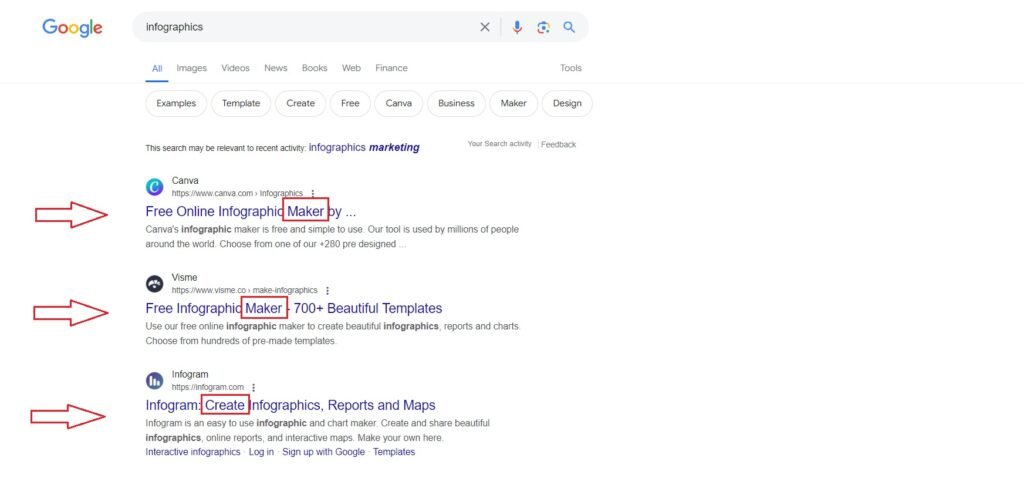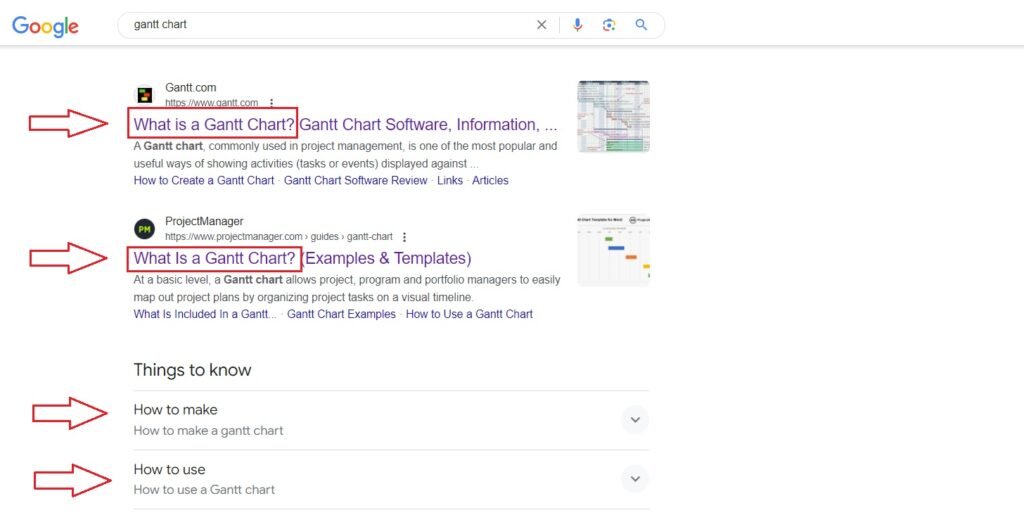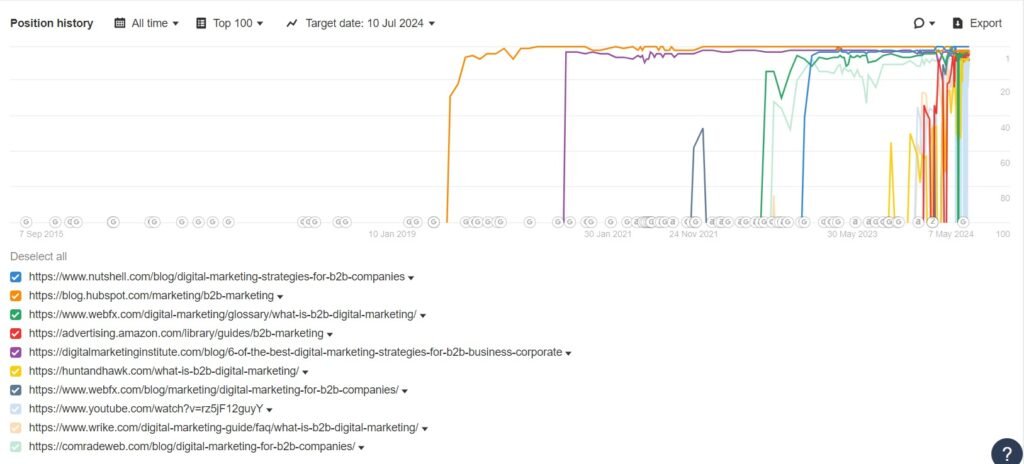7 Steps to Create An Effective SEO Strategy (July 2024)

Angel Diaz
In this post you’ll learn all the information you need to create and implement an effective SEO strategy for your business step by step. 13-minute read

SEO has changed a lot recently, with more big changes expected.
This guide will help you understand what makes a strong SEO strategy today.
We’ll cover the key parts and important things to consider for creating and implementing an effective SEO plan to boost your online business.
What is an SEO Strategy?
An SEO strategy is essentially your business’s plan for leveraging SEO to achieve marketing goals. It involves a broad scope of areas that must be finely tuned to ensure your content ranks well on search engines like Google.
An SEO campaign is about making a profit. All the strategies we create aim at the same purpose. Increase our client’s online presence so they can receive more traffic and consequently increase their brand awareness and revenue.
Naturally, this is easier said than done. So how can we create an SEO strategy that works in today’s competitive world?
How to Create an SEO Strategy That Works

To build a successful SEO strategy for your business, consider the following 4 steps:
- Product/service research stage
- Keyword research
- SERPs and type of content analysis
- Market & competitor research
- SEO strategy creation
- SEO strategy implementation
- Performance Monitoring and adjustments
1. Product/service research
The first step to creating a data-driven SEO strategy is understanding the product or service you’re building your SEO strategy around. If we don’t understand the product, we won’t be able to leverage all its features to create content that attracts the right customers.
On the other hand, if we can exploit every single feature with different SEO approaches, we can create hundreds of landing pages, blog posts, or product pages that rank well and are aligned with the right search intent.
Let’s take Adobe as an example. They have a “create” subfolder, which serves the “create” user intent. That is to say, users looking to create a personalized design on their own. Keywords such as “create logos, create banners, or create resumes” fall into this category.

Now, the Adobe create editor is always the same. However, because the SEOs that designed the strategy knew the product and all its features, they were able to target many different keywords with millions of monthly searches so users could benefit from the editor.
This is just a basic example of how knowing your product or features to its core can help you reach many people across different industries who can benefit from what you have to offer.
2. Keyword research
The next stage to devise a strong SEO strategy is keyword research. This is one of the most important stages because choosing to target the right keywords might make all the difference.
For keyword research to be effective, we need to take the following aspects into consideration:
- Search intent
- Keyword difficulty
- Search volume
- Relevance
Search intent
Let’s see an example of how to discover the right search intent for your keywords.
Let’s say that you have a website that talks about statistics. You have created a beautiful informational article that explains what an infographic is and how you can use it correctly.
While doing your keyword research, you discover that the keyword “infographics” has 17k monthly searches. That might sound pretty juicy at first and you might want to go for that term as it offers the highest search volume. However, in this case, that wouldn’t be the right thing to do.

When we analyze what Google considers to be the right search intent, we discover that people who use the keyword “infographics” are probably looking to create infographics from pre-made templates.
We can see how all the pages in the SERP for this keyword focus on the creation or editing of infographic templates.

That being said, if you do a little more research, you can see that the term “what is an infographic” actually aligns with your content.

Although it has a lower search volume, this is the term you want to target as it will attract the right readers and Google will see it as the right type of content to show on SERPs when people input this query.
Keyword difficulty
After discovering the search intent behind the keywords you want to target, it’s time to assess keyword difficulty. Although this is not a standard metric across every single keyword research tool, most times it’s a valuable glimpse into how much effort targeting a keyword will involve.

In my case, I will target more or less difficult keywords depending on the domain authority and brand awareness my clients’ websites have.
I’ve ranked highly competitive keywords for clients with massive domain authority and brand awareness relatively easily. However, I’ve struggled to rank competitive keywords with smaller or newer websites as they lack the authority to tackle these types of keywords.

This is where the keyword difficulty assessment comes in handy. It’s important to be honest and target keywords you know you can rank for even if they don’t have a high search volume.
It’s better to rank for 100 non-competitive keywords than waste time and budget trying to rank for a competitive keyword when you don’t have the domain authority to back it up.
Search volume and relevance
As per search volume, it’s usually not the best idea to go for the highest volume keyword you see. As I explained before, there are other factors such as search intent and keyword difficulty to take into account before deciding the right keywords for your project.
The good thing is that on many occasions, it’s the little keywords across hundreds of pages that bring in a large percentage of a website’s total monthly sessions.
As long as a keyword is relevant and aligns well with your product or service, I will launch pages with as little as 10 monthly searches. Everything adds up when it comes to SEO, and if it’s low-hanging fruit, I’ll definitely go for it.
3. SERPs and Type of Content Analysis
One crucial yet often overlooked aspect of SEO is the analysis of search engine results pages (SERPs) and understanding the types of content that perform well.

For a strong SEO strategy, it’s essential to assess the content that currently ranks well on Google for keywords relevant to your site. This examination helps pinpoint effective elements and shortcomings of the content within your competitive landscape.
There are essentially 2 aspects you want to focus on when doing the assessment:
Content type:
- Blog posts
- Product pages
- Category pages
- Landing pages
Content format:
- Comparisons
- How-to’s
- Lists
- Opinions
- Reviews
- Informational
Let’s see a practical example:
Let’s try the keyword “Gantt chart”. When we type this keyword on Google we can see that practically all the results are blog posts. So this is a clear indicator that the content type you want to target is blog articles.

When we visit one of these websites, it becomes clear that the content format needs to be informational and provide valuable resources to the readers.
If you wanted to rank this keyword, you would need to focus your content strategy around these parameters. Otherwise, it would be really difficult for search engines to consider your content relevant to this specific query.
It’s always important to perform SERP analyses in the research stage of your SEO strategy, long before you start to create a blog for your business website. If you skip this step, you might end up wasting resources on crafting content that probably won’t rank well and won’t drive any traffic to your website.
4. Market Research
The next step in our SEO strategy creation is conducting thorough market & competitor research. The process should start by defining your target market.
Once identified, proceed to develop detailed personas for individuals within this segment to gain insights into their needs, lifestyles, and potential frustrations.
With a clear understanding of your audience’s specific requirements and challenges—derived from the information collected during your market research—it’s essential to examine how your competitors engage with and meet the needs of this same audience.
Pay attention to the strategies that are proving successful for them, which will provide valuable benchmarks for shaping your own approach.
Competitor research
Apart from market research, you also want to take a look at your competitors on SERPs. To outrank your main organic competitors, it’s crucial to grasp who they are and their strategies.

Effective competitor analysis involves examining the content they produce, identifying the keywords for which they have high organic rankings, and comparing how your site stacks up against theirs.
Additionally, this analysis can reveal untapped opportunities within your industry, offering potential areas for you to explore and exploit.
By thoroughly understanding your main competitors’ actions and strategies, you gain insights into the types of content that resonate with your audience and identify areas where you can enhance your site’s content quality.
This research is invaluable not only for refining your SEO approach but also for deepening your understanding of your target audience’s preferences and behaviors.
5. SEO strategy creation
Once you have gathered comprehensive data from the previous steps, it’s time to craft your SEO strategy. An SEO specialist will ensure the SEO plan is aligned with current SEO trends and tailored to enhance your website’s performance.
I personally like to divide the SEO strategy creation into 4 steps:
a. Deciding on a methodology or management framework
When working on large or complex projects such as an SEO campaign, it’s important to choose the right management framework that will allow you to complete your project smoothly. In my case, I prefer using Scrum.
Even though the Scrum framework is usually better for software development, I’ve discovered that it’s also incredibly helpful when undergoing an SEO campaign.
It allows you to track your progress and prioritize the right tasks effectively. When hiring an SEO specialist, validating if they have experience working with management frameworks is always a good idea.
b. Setting up your management software
Having management software is a must when planning an SEO campaign. It will allow you to organize your tasks and track progress easily. Not using management software for large or complex projects is like trying to navigate the ocean without a boat or a map.

Having management software is a must when planning an SEO campaign. It will allow you to organize your tasks and track progress easily. Not using management software for large or complex projects is like trying to navigate the ocean without a boat or a map.
c. Creating the project scope and goals
The next step is creating the project scope, which includes your north stars. It’s important to set realistic milestones, deadlines, and goals.
When working on an SEO campaign, it’s easy to underestimate how much work has to be put into the different tasks. Also, obstacles can usually appear along the way, which need to be sorted out.
This is why is better to be conservative when setting goals. It’s always better to achieve more than you planned for than not meeting your goals.
d. Setting up SEO analytic tools
This part is crucial for understanding how effective your SEO strategy is over time. It’s important to monitor the performance of the pages you publish and optimize. You can use many different tools and metrics to ensure your strategy is working as expected.

Some of the tools you can use are:
- Google search console
- Google Analytics
- Ahrefs
- SEMrush
- Screaming frog
- Dragon metrics
- Looker Studio
What are the basic metrics you should monitor when running an SEO campaign?
There are many metrics you can monitor depending on your specific goals. However, there are certain metrics almost every single SEO campaign measures to ensure everything is working well.
- Total sessions
- Total signups
- Conversion rate
- Impressions
- Keyword rankings
- Referring domains
- Core web vitals
You can choose many other metrics to monitor performance such as bounce rate and dwell time, among others, but these are not always essential.
We have finally reached the end of our SEO journey. The last step to a successful SEO campaign is of course its implementation.
How to Implement an SEO strategy
No matter how much time you have invested in planning, proper execution is key to transforming your strategic vision into tangible results.
Neglecting these essential aspects can result in an ineffective SEO campaign, regardless of how well-planned your strategy might be.
To ensure the successful rollout of your SEO strategy, consider following these essential practices:
1. On-page SEO
Implementing your SEO strategy effectively requires meticulous attention to on-page SEO. This aspect focuses on optimizing the content and structure of your website to enhance both user experience and search engine visibility.
Effective on-page SEO ensures that visitors find the information they need quickly and efficiently, while also making it easier for search engines to index and understand your site’s content. Key components of on-page SEO include:
- Title tags
- Meta descriptions
- Headings and subheadings
- Alt text and image names (alt tag)
- Internal linking
- Content relevance and quality
2. Off-Page SEO
Off-page SEO is all about getting links to your website from other sites or well-known blogs in the same niche as yours, so people can find you by looking at third-party sources that are relevant to what your site offers.
Off-page SEO includes:
- Social media marketing (Facebook, Twitter, YouTube)
- Guest blogging on other websites in the same niche as yours
- Inbound link building with authoritative sites that are relevant to what you offer
- Press releases
- Email marketing and newsletters.
3. Conversion optimization
Having thousands of visitors a month but not being able to sell your product is a common problem when you don’t optimize for better conversion rates. In order to maximize the possibilities of converting, you need to make it as easy and simple as possible for the customer to buy, so that they do not hesitate or get lost in a sea of options.
Including CTAs or call to action is important for conversion optimization to work. CTAs are typically buttons that encourage the user to take action, whether it be signing up for a newsletter or purchasing your product without needing more information.
Craft your CTAs in a way that is clear and concise, so that it grabs the customer’s attention.
4. Lead generation
Not always will you be able to sell your product right away. Sometimes, it’s necessary to convince the potential buyer using different tactics and strategies such as email marketing.
Lead generation is a key part of an effective marketing strategy because it allows you to continue the pursuit of people who might be interested in your product.
Lead generators can take many forms, from contests and webinars to email campaigns that are sent out on a semi-regular basis. You should make sure that the leads generated by these efforts are qualified in some way and that they have an interest in your specific product.
5. Optimized web design
The last step is web design.
Did you know that 94% of first impressions relate to your site’s web design? A web design that looks untrustworthy or difficult to understand will have a negative impact on your bounce rate, conversion rate, and ultimately your position on SERPs.
It is for this reason that you need to work on your web design.
Optimizing your site for mobile devices is also a crucial part of the modern web design process.
In summary
An SEO strategy is like a living being, you need to constantly monitor it in order to make changes and little tweaks that allow you to reach your marketing goals.
You should always experiment with your SEO and do a lot of a/b testing to see what works better.
I hope you’ve found this post useful. If you have any questions or would like to create an SEO strategy for your business, you can reach out to me using the contact page on this website.
Good luck!

